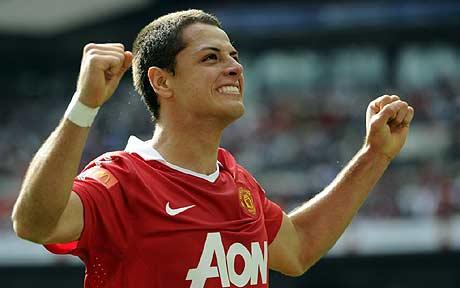The changing nature of the game has led to dominance of the centre of the pitch and thus three-man midfields becoming more and more important to controlling matches. With the extra man generally being pulled back into the midfield from the front-line (rather than from the defence, though three-at-the-back formations are becoming more regularly used), the deployment of lone striker formations has become increasingly common.
This, in turn, leaves a single forward to lead the line and perform a wide range of roles all by themselves. Included in this is often not just an attacking role, but a required contribution to all parts of the game. From getting involved in things like pressing defenders and preventing build-up play of the opposition, to helping in transitions and developing their own side’s attack, there is such an important role to be done other than just finding the back of the net. With just one player leading the line, no longer can the burdens of all this be shared between a partnership.
Previously more of a necessity, the change of style in the modern game has made pure ‘poachers’ a luxury. The demands on modern forwards are bigger than ever and, with them being required to add more to games than just goals, having simply ‘penalty-box’ strikers is no longer an option – or else teams risk isolation and ineffectiveness from their main goal source if they cannot provide the right service. This has led to managers looking for the better-rounded, modern day strikers, leaving players in the poacher mould as slight outcasts.
A typical example of the lack of trust being placed in this kind of striker is Javier Hernández, who played less than 1,000 minutes in the Premier League last season. During this time he racked up 10 goals, at a rate of around 0.95 goals per 90 minutes played – a fantastic record given his lack of regular game time. Yet for all his end product, Sir Alex Ferguson never really entrusted the Mexican with a start, instead preferring to persist with Danny Welbeck (who scored just 1 goal in around 1,300 league minutes) as his 3rd choice striker.
Darren Bent meanwhile, during his spell at Aston Villa under Paul Lambert last season, was dropped for the (at the time) relatively unknown and unproven Christian Benteke. Lambert got a fair amount of stick for this decision initially – especially with regards to Bent’s goal record in the Premier League – but a struggling Villa side couldn’t afford to carry someone who drifts in and out of games like the Englishman, giving the young Belgian a chance to exert his talents and reward his manager extremely highly. As I said, dropping Bent was a bit of a contentious issue, especially when he cost the club around £20 million, but then what would you prefer – a strong, dominant and hard-working centre-forward, or one whose effectiveness is severely limited outside the 18-yard box?
That may sound a bit harsh on Darren Bent, a man who has more than proven himself in the top flight on many occasions, but there’s much more than just an element of truth to it. Give players like Hernández and Bent the right service and they can thrive, but having a striker whose form isn’t fully dependent on his teammates is a real bonus within a side. Even strikers of the highest quality like Mario Gómez have fallen victim to this trend though, with the energy and tactical awareness of Mario Mandžukić being preferred to the German’s greater instinct for goals. So it’s not as if it’s only players for mid-table teams and back-up strikers in the poacher mould who are suffering, but a global change amongst some of the best teams with the aforementioned dominance of the game in midfield being preferred.
In the current era of the game, there is little (if any) substantial room for penalty-box strikers to be a main man for a team, especially in a one-striker formation. There are few better theoretical substitutions than a natural goal-scorer if you need a goal however, so perhaps that may be where their future lies – but it is a bleak future at best.
Add Sportslens to your Google News Feed!
